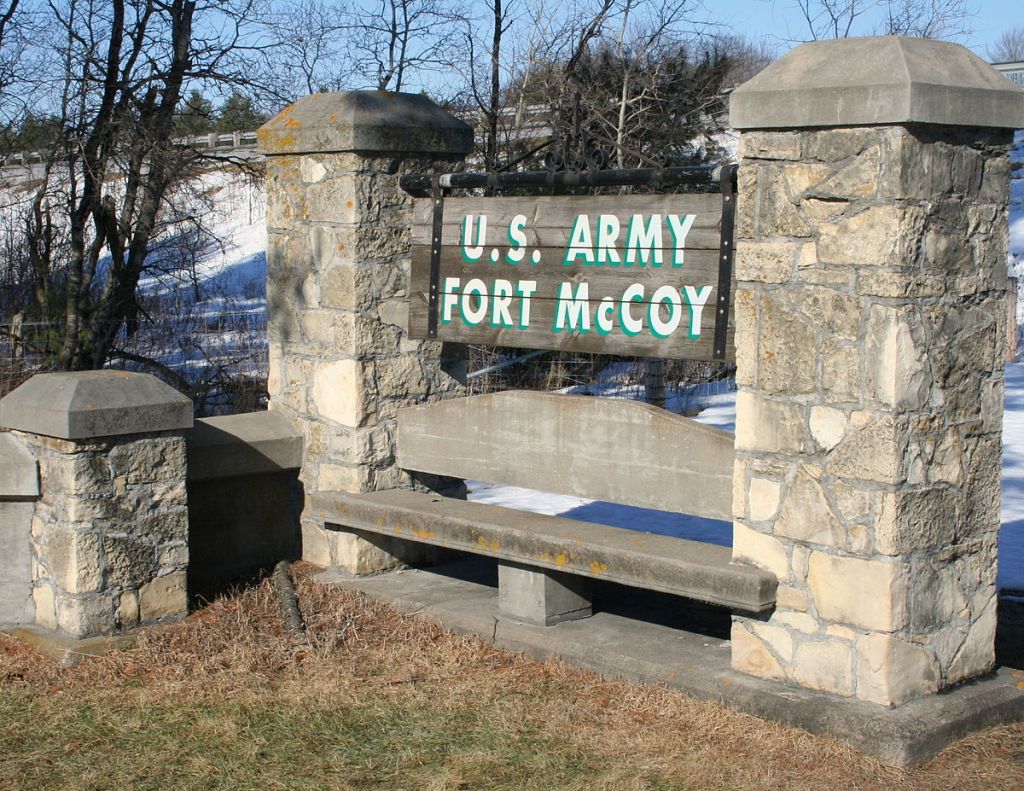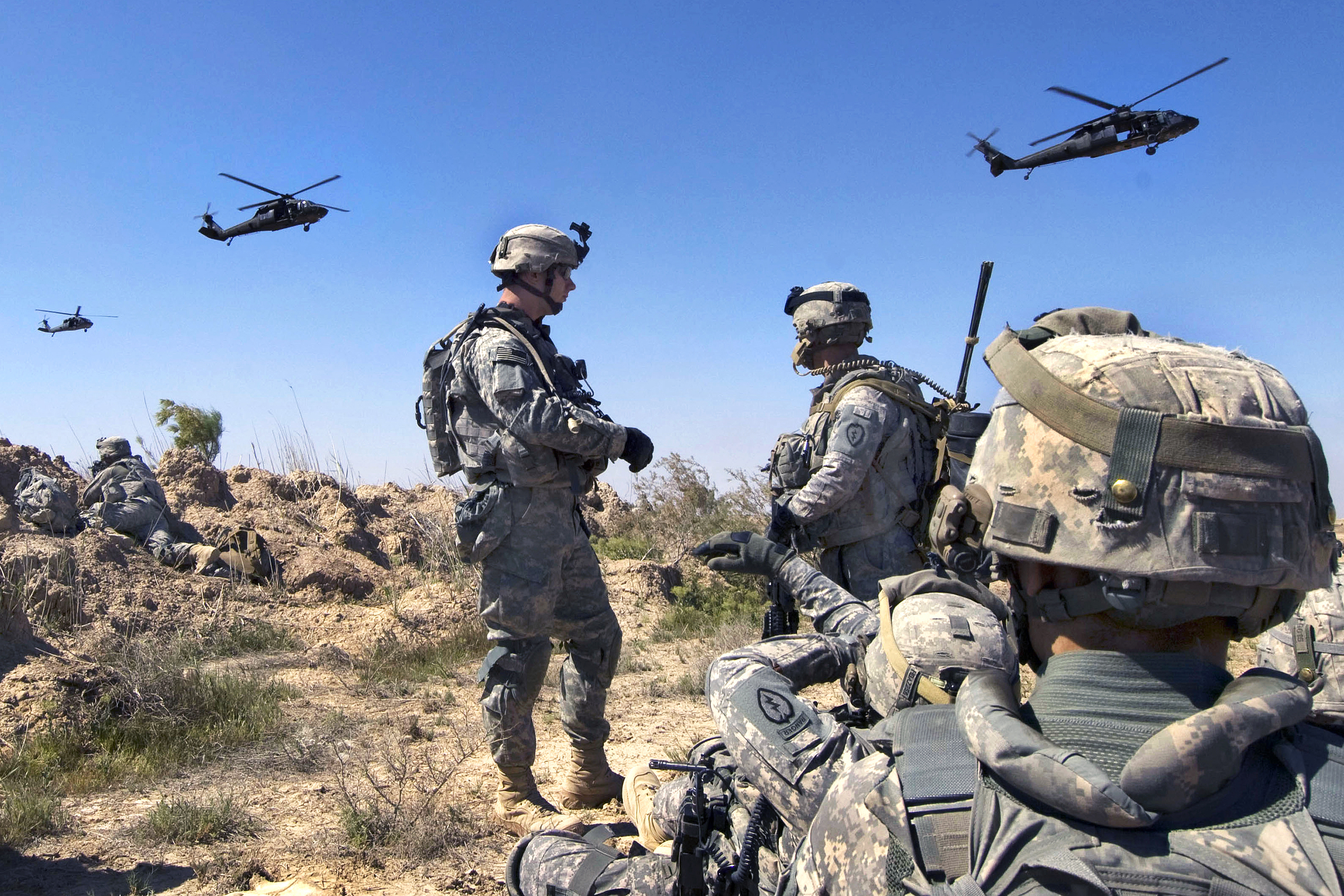
Map of Fort McCoy
Fort McCoy was named after Robert Bruce McCoy, a military man who served the force for 31 years and was given the rank of Major General and recognition for his efforts during the Spanish-American War and the First World War, and for police action in Mexican areas. Robert Bruce McCoy was born on September 5, 1867 in Kenosha, Wisconsin. His military career began in 1895 and by 1920 he was nominated as a Democratic Party candidate for a spot as governor of Wisconsin.
Fort McCoy started out as small tracts of land envisioned by Robert Bruce McCoy to become an artillery camp for training soldiers. He eventually acquired 4,000 acres of land under his name but parts of his property were initially rented out to finance his future purchases. Then in 1906, the Secretary of War proposed the construction of large maneuver camps across the country that will be jointly utilized by the National Guards and the Army. Included in the proposal was an appropriation of $150,000 to purchase additional land. When the locals heard of this plan, land prices shot up from around $3 for every acre to a whopping $30 per acre. A lot of attention was on McCoys property because of this, and in the end, his property was purchased alongside others totaling more than 14,000 acres of land.
In 1909, the Sparta Manuever Tract was built, today known as the South Post, cut into half by railroad tracks. North of the tracks is the Camp Emory Upton maneuver camp, while south of the tracks saw Camp Robinson. Further construction to fortify the site was approved in 1910, and during that time the camp was named after Rober Bruce McCoys father, Bruce Elisha McCoy. The year 1910 also had events that cemented the camps reputation as a superb field artillery site, continuing until 1919 to be the artillery’s favorite. During the First World War, the camp was recognized as the largest, most beautiful, and most modern in the country, significantly growing in size because of the addition of barracks, stables, mess halls, and warehouses needed for the war.
From 1919 to 1923, training in Fort McCoy stopped and it was called the Sparta Ordance Depot. During those years, it was the forts primary function to store, handle, and ship materials for explosives, like Pyrex cotton. Pyrex cotton is a highly explosive material made from cotton that has been treated with sulfuric and nitric acids. From 1923 to 1925, efforts were in place for dismantling the barracks and deactivating the depot. All leftover explosive powders were sold to the commercial market and lumber salvaged from the dismantling activities were used for boxing and shipping surplus of the powders to other government depots. It was in November 1926 when the place was officially named Camp McCoy after Major General Robert Bruce McCoy. McCoy had died earlier in January and naming the fort after him was a way of honoring everything that he has contributed to the military.
When the Second World War broke out, Camp McCoy was re-established as a training zone for the Second Army Maneuvers, made up of 65,000 soldiers from across seven states. The Second Army Manuevers was the largest troop concentration in all of Midwest since the First World War. It was in the summer of 1940 though when the last artillery left the fort. A lot of things have happened since the Second World War ended, ranging from using the fort to keep prisoners of war and as a training center for nurses in the Army. In 1945, Camp McCoy officially became a reception and discharge center for overseas soldiers. In all the years that it was operational, Camp McCoy as a reception and discharge center processed close to 250,000 soldiers.
Then in 1952, for economic reasons, operations at Camp McCoy were curtailed, and full deactivation was done in February 1953. However, in 1955, Camp McCoy was bustling again as the Wisconsin State Patrol converted the camp into a training academy and housing settlement. In 1974 though, the camp was given FORSCOM installation designation and with the Department of the Army General Order No. 45, it was officially renamed as Fort McCoy, the name it uses today. As a FORSCOM installation though, this meant that Fort McCoy was to be used as an Army training facility all year round.
Today, Fort McCoy is a 60,000-acre property with 1,432 buildings and facilities on site, some of which are called home by more than 140,000 retirees and their families. Of the people employed in Fort Mccoy, there are more than 1,000 military personnel, over 1,700 civilians, and more than 1,000 contractual individuals. In the FY 2010, more than 111,300 personnel were trained at the fort, including training done for all branches of the service, both reserve and active component, and troops processing for mobilization and demobilization through the fort.
There are also all sorts of tenants calling Fort McCoy home, ranging in services offered from recreation and dining to healthcare and worship, and other offerings. Some of the Fort McCoy tenants include: Rumpel Fitness Center, Sportsmans Range, Whitetail Ridge Ski Area, Snack Avenue, McCoys, Primo Express, an alteration shop, barber shop, beauty salon, car wash, a Hertz car rental office, GNC, laundry services, military clothing sales, vehicle registration, places of worship, family support services, Alcoholics Anonymous, occupational health clinic, and offices for the American Federation of Government Employees, the Association of the United States Army, the American Society of Military Comptrollers, Better Opportunity for Single Soldiers, Friends and Spouses of Fort McCoy, Patriot Warrior Riders, Reserve Officers Association, United States Field Artillery Association, and the Warrant Officers Association. Most facilities adjust operating hours during the holidays so if you are interested in going to one of the tenants in Fort McCoy, it would be advisable for you to call beforehand and verify hours with them.
Fort McCoy is rich in history so its not surprising that a number of people are interested in going to the fort to search for relics. Be reminded that scavenging in Fort McCoy is prohibited, according to the Army Regulation 420-47. All properties belong to the United States and whatever archeological resources are found on public lands cannot be removed under Federal law.
Video – The 181st Infantry Brigade at Fort McCoy, Wisconsin


You must be logged in to post a comment.